This species has been observed on Reunion, Mayotte, Madagascar and Seychelles Islands
Species characteristics : The head, outsides of the parapodia and the foot are dirty white to pale grey with numerous slightly darker spots each surrounded with a pale ring
(ocellated)
. |

|
|
| Showing species characteristics... | Photo Maurice Jay |
|
See more about : Sightening and mating periods
See more about : Plakobranchus ocellatus variability in Southwest Indian ocean
Remarks :
Identification confirmed by Kathe Jensen and Bill Rudman
Synonymous : (according Worms)
- Very numerous synonymous see worms
Bibliographic data :
The color pattern and distribution of spots varies considerably, but the internal anatomy shows so few differences that it must be considered one species with a wide distribution.
It has a very soft body which is dorso-ventrally flattened. The thin, smooth parapodia, which completely covered the body, meet along the dorsal midline and they can only separated with difficulty.
The sacoglossans feed by sucking the cell sap out of algae. Some, such as P. ocellatus, keep the chloroplasts from the algae alive in their own bodies, where they continue to photosynthesize - converting the sun's energy into sugars. It stores huge numbers of bright green chloroplasts in ridges hidden from view beneath the parapodial flaps.
According Jensen, it is never found in close association with any particular alga, indeed its natural food is unknown. It will feed on Chlorodesmis sp (Udoteaceae) and Udotea sp (Udoteaceae) in the laboratory.
P. ocellatus is a common inhabitant of shallow coral reef pools and lagoons. It is seldom seen as it is well-camouflaged, half buried in the coral sand
The egg mass is rather different from most elysiid masses. It forms an irregular band containing numerous small eggs
References :
Bill Rudman Seaslug site : Sea Slug Forum : Plakobranchus ocellatus
Nudipixel Plakobranchus ocellatus
Publications :
Hasselt , J.C.v. (1824). In Andre Férussac. Extrait d'une lettre du Dr. J.C. van Hasselt au Prof. van Swinderen sur mollusques de Java (traduit de l'Allemand. konst en letterbode, 1824, nos. 2,3,4) Tjuringe (île Java) le 25 Mai 1823 (1). Bulletin des Sciences Naturelle et de Géologie, 3 : 237-248
Jensen, K.R. (1992) Anatomy of some Indo-Pacific Elysiidae (Opisthobranchia: Sacoglossa (=Ascoglossa), with a discussion of the generic division and phylogeny. Journal of Molluscan Studies, 58(3) : 257-296
Jensen, K.R. (2007). Biogeography of the Sacoglossa (Mollusca, Opisthobranchia). Bonner Zoologische Beiträge. 55: 255–281
Other photos of Plakobranchus ocellatus :
Maurice Jay Réunion, La saline lagoon, under a dead coral, 16 July 1989, Detail of the head were :
|
 |
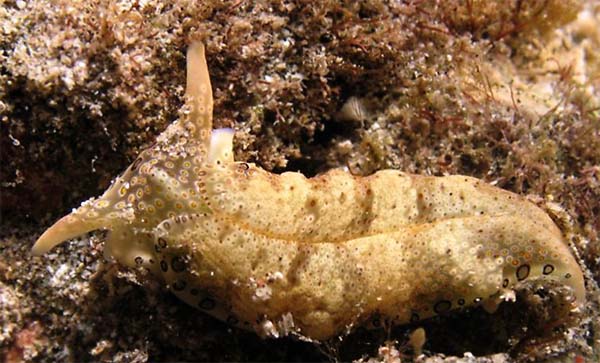 |
Sonia Ribes Beaudemoulin Réunion, flat reef of l'hermitage, Saint Gilles, less 1 m, 18 May 2007. Several specimens find in little sandy area on the flat reef. |
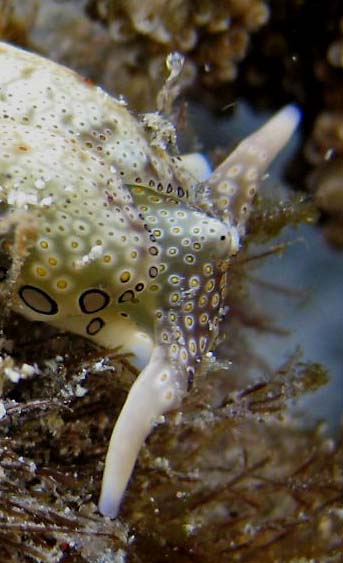 |
Detail of the head were :
Three specimens on a little sandy area on the flat reef
|
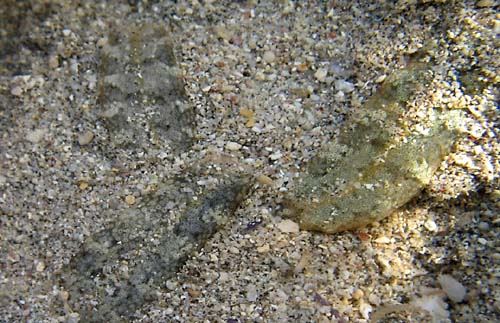 |
Eva Fontaine Tsoha at Mayotte, crawling on the reef flat zone, less 1 m, 31 July 2008, size 20 mm. They keep the chloroplasts from the algae alive in their own bodies, where they continue to photosynthesize. It stores huge numbers of bright green chloroplasts in ridges hidden from view beneath the parapodial flaps. |
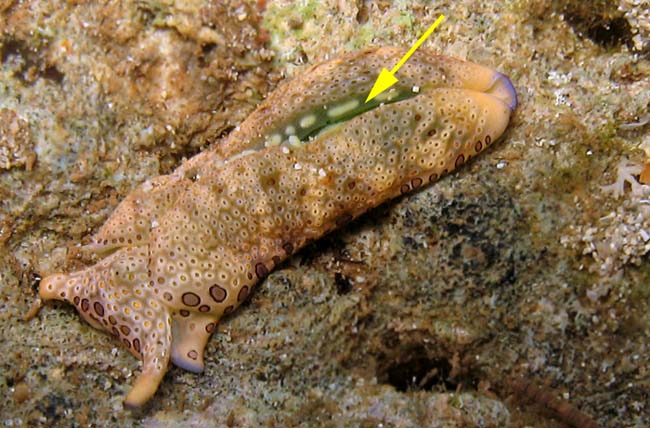 |
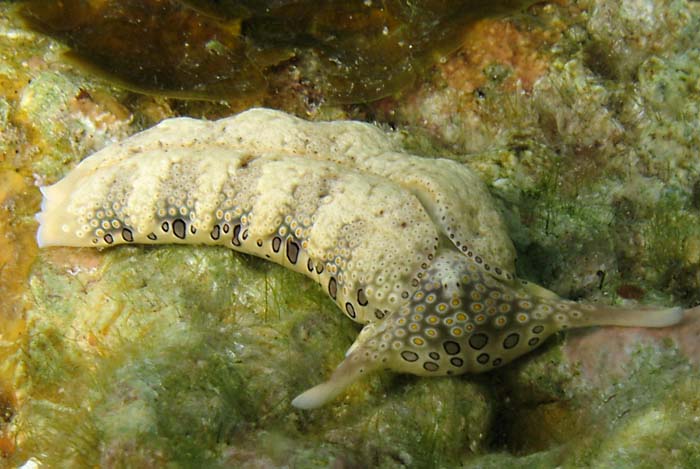 |
Philibert Bidgrain Réunion, La saline lagoon, less 1 m, 18 June 2009, size : 25 mm
|
Philippe Bourjon Réunion, Trou d'eau lagoon, less 1 m, 27 September 2010, size : 20 mm It stores huge numbers of bright green chloroplasts in ridges (a) hidden from view beneath the parapodial flaps. 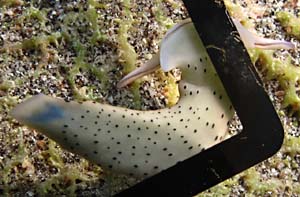 |
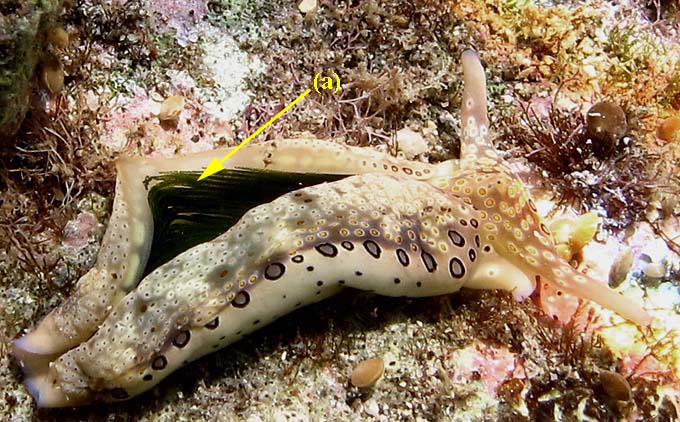 |
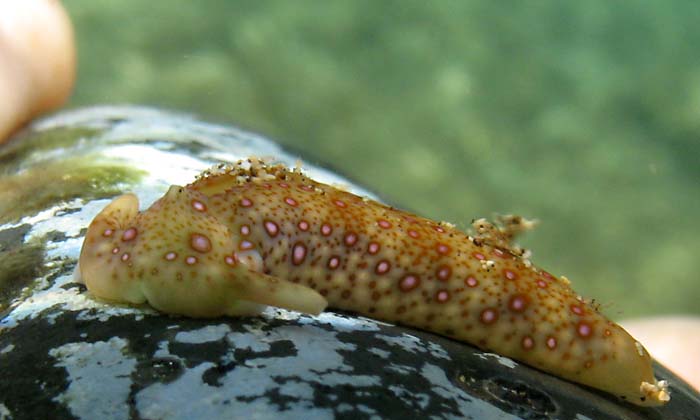 |
Eva Fontaine Mayotte, Mtsanga Tanaraki, crawling on the reef flat zone, less 1 m, 25 July 2010, size 15-20 mm.
|
Philibert Bidgrain Mayotte, Mtsanga Tanaraki, on the reef flat zone, less 1 m, 25 July 2010, size 15 mm. Try to found the rhinophores... A well camouflated specimen isn't it??? |
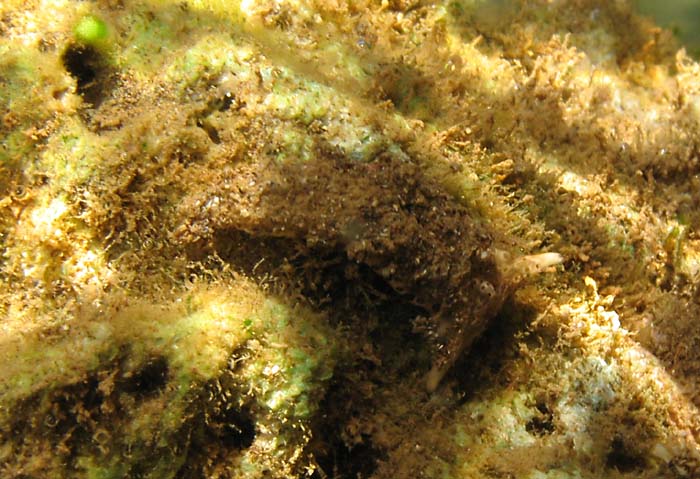 |
More photos from Indian Ocean
See more about : Plakobranchus ocellatus variability in Southwest Indian ocean
Mayotte, underside of Plakobranchus ocellatus, at Sakouli, by Philibert Bidgrain
Madagascar, Plakobranchus ocellatus, at Andavadoaka, by Alain Barrère
Seychelles, Plakobranchus ocellatus, at Mahé, by Christophe Mason-Parker